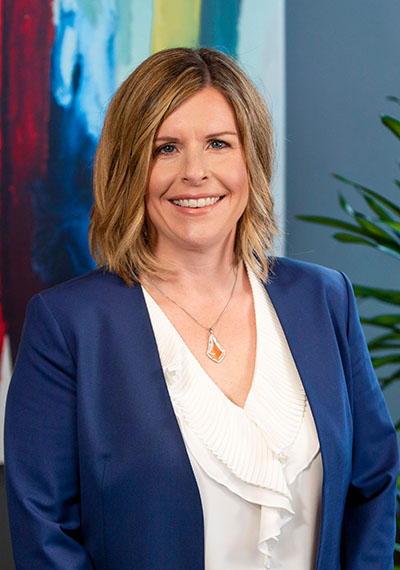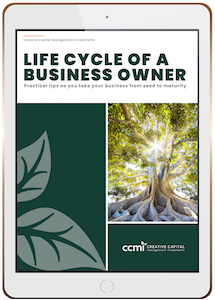Your mid-fifties is the ideal time to start planning for life after work, sometimes called “retirement”. At CCMI, we prefer to call the years after you stop working the “Encore Years”. Here are some general guidelines to consider prior to entering your “Encore Years”:
1 – Increase your savings.
During the last years of full-time employment, make the most of your higher earning years. Begin by maximizing the amount you defer into your retirement plans. If you are self-employed, contribute the maximum amount possible to your retirement plan and check to see if you have adopted the most advantageous qualified plan. Ideally you won’t withdraw anything from any of your retirement plans until your age of 70½, at which point required minimum distributions start. Consider Roth IRA contributions and HSA contributions if your circumstances allow contributions to one or both of these types of plans.
2 – Savvy Social Security Planning.
Even though you’re eligible to start drawing Social Security at age 62, that may not be the best option. Selecting when to take Social Security benefits is a complicated decision that can significantly impact your long-term financial health. The place to start is to check your benefits at 62, full retirement age of 66 or 67 and at age 70 by going to www.ssa.gov. Selecting the wrong option could mean a loss of more than $100,000 in lifetime benefits. As there are numerous ways for married people (or anyone who was married for 10 years) to take Social Security, working with a knowledgeable CFP® is a good idea.
3 – Get a financial wellness checkup.
Work with a fee-only CFP® to determine if you are on the right track to financial independence. A thorough, detailed financial plan will result in receiving written recommendations on how to reach your financial goals and outline the steps to take to get there.
4 – Expect to work longer, if you haven’t saved enough.
A thorough financial wellness checkup will tell you if you can’t live on the assets you have and Social Security. If you plan early enough, you may be able to make one or more adjustments to help you reach your goals after you leave full-time employment. Social Security was never meant to be the only source of income for retired individuals. Keep an open mind about the need to work longer or start another career or a business to supplement your income needs over the longer-term.
5 – Figure out how much you’ll really need when you retire.
It is unrealistic to think you will spend less in retirement than you currently spend. Moving to a less expensive area to cut housing costs can help; however, if you plan to travel or pursue a hobby like golf, your expenses may actually increase. A very rough estimate is to withdraw no more than 4% annually of your portfolio principal on an annual basis. Compute that amount and add it to your projected Social Security benefits or any pension distributions, to compare that total amount to your retirement budget. This will give you a rough idea of where the financial “holes” may be. Remember that this rough estimate doesn’t reflect the impact of inflation on expenses (such as health care costs) you will encounter later in life.
6 – Reduce debt as much as possible.
Heading into retirement with debt payments will cause a “drag” on your lifestyle and savings. Most consumer debt is accompanied by non-deductible interest, which is money you could be using for your future. Whether you need to pay off your mortgage before you retire depends on a number of factors, including the payment amount, the rate of return on your portfolio(s) and your expected retirement income.
7 – You will still need growth in your portfolio in retirement.
Thinking that you need only conservative investments such as CDs or bonds as you head into the Encore Years may not be in your best interest. Keep enough of your portfolio in either fixed income or cash to provide for funds needed during a recession. The other part of the portfolio can be invested in stock funds to provide the appreciation you will need for your life expectancy. You will need to find a balance between the need for growth and your ability to withstand the fluctuations of the market.
8 – Be ready to cope with life changes.
The only certainty in life is change. Therefore, develop back up plans to your ideal situation to cope with the death of a spouse, loss of a job, divorce or a life limiting illness. Remaining flexible as life unfolds will help as well as having contingency plans.
9 – Update your wills, trusts and beneficiaries.
Although many folks think that a will or a trust will direct to whom retirement accounts go– that’s not correct. Retirement accounts are distributed to the beneficiaries you name on a beneficiary designation form for those accounts. Thus, it’s vitally important to make sure you keep the beneficiary forms updated and periodically check on them. Reviewing your will, trust, durable powers and advance medical directives is also very important. Life can change in an instant. Naming the correct individuals to step into your place for financial or medical decisions is an important part of being financially fit. These issues are especially important for unmarried couples, single individuals or couples in second marriages.
Are you prepared to retire? CCMI’s team of CFP® professionals are here to help you evaluate all of your options and to see if you are ready for your Encore Years or if adjustments are needed to enjoy your retirement.
CCMI provides personalized fee-only financial planning and investment management services to business owners, professionals, individuals and families in San Diego and throughout the country. CCMI has a team of CERTIFIED FINANCIAL PLANNERTM professionals who act as fiduciaries, which means our clients’ interests always come first.
How can we help you?






